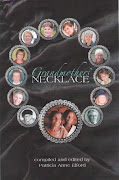Our ‘on-the–page’ voice must match our ‘real-life’ voice if we want our writing to have an authentic ring to it was the advice Charles Foran emphatically drove home to a WCDR breafast last week in Ajax. Winner of The 2011 Charles Taylor Prize for “Mordecai: The Life and Times”, his biography of Mordecai Richler, he illustrated his message with remarks and readings from his book of essays, "Join the Revolution, Comrades" and with stories and readings from his biography of Richler.
Since then, I have been thinking about my voice and wondering just what it is? I have a soft voice that wouldn’t project when I was in the drama club at Northview Collegiate. I have a quietly intelligent voice. I have a thoughtful voice. I have an inquiring voice. I don’t speak without thinking. I’m not quick to draw attention or promote myself. On the page, I lean towards a more journalistic style, listing facts and documenting my points. Is it only an inviting engaging voice that entices the reader to go on? Do you have to be an Irish story-teller to captivate an audience?
A challenge Charles didn’t address was how to capture my child’s voice, maybe age 6 or 7 and then grow myself up to the concluding chapters of my memoir. How do I move my voice along as I change? I know I did change. My effervescent child’s voice was stifled in adolescence. I became shy and introverted. Then I gradually reasserted myself. Can change be shown by picking several points along my timeline to illustrate the differences? What do you think?
Any thoughts on voice?
There Are No Rules - Creating Memoir That’s Bigger Than Me, Me, Me
I came across this excellent article by Tracy Seeley on Jane Friedman's Writer's Digest Blog and am posting a link here:
There Are No Rules - Creating Memoir That’s Bigger Than Me, Me, Me
Copyright © 2010, Ruth Zaryski Jackson
There Are No Rules - Creating Memoir That’s Bigger Than Me, Me, Me
Copyright © 2010, Ruth Zaryski Jackson
Subscribe to:
Comments (Atom)






